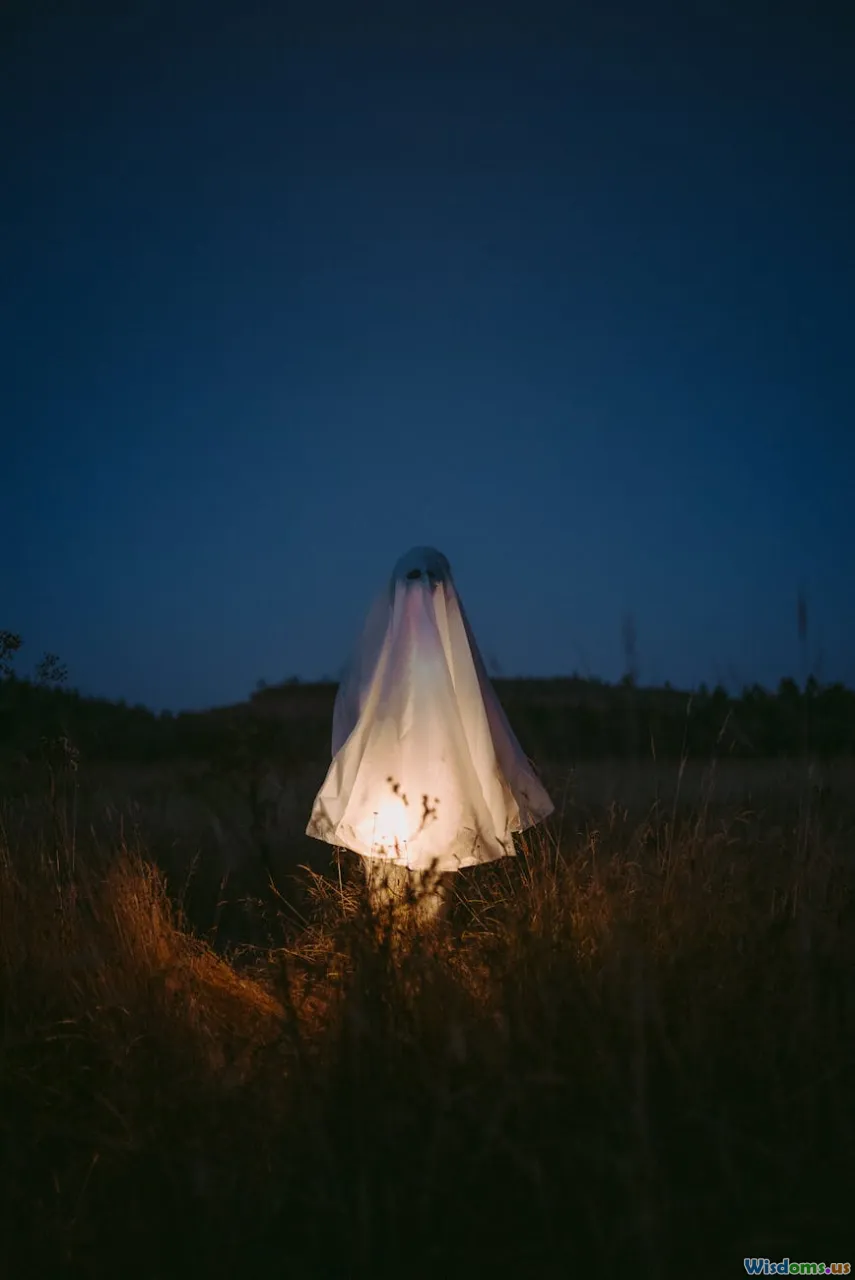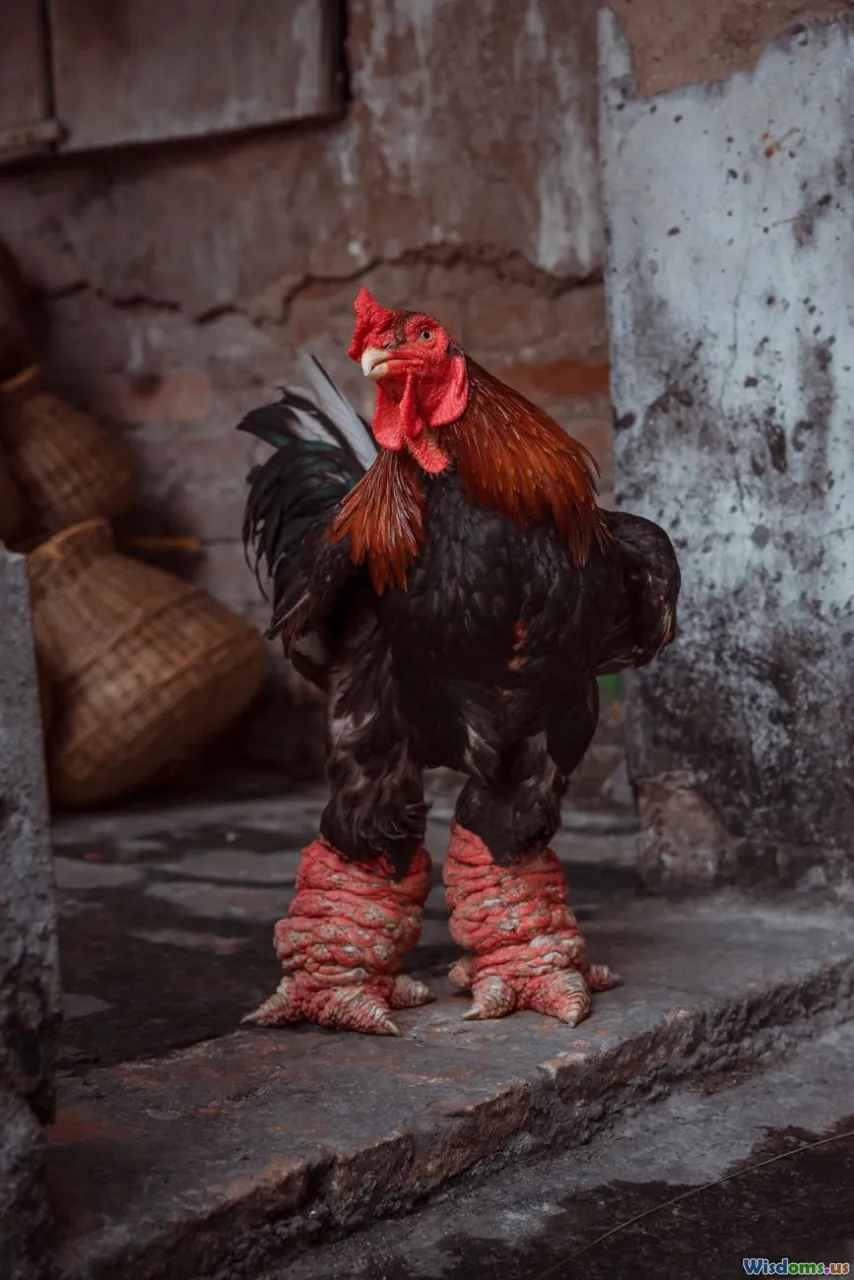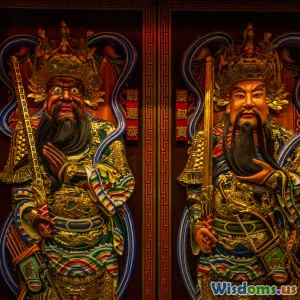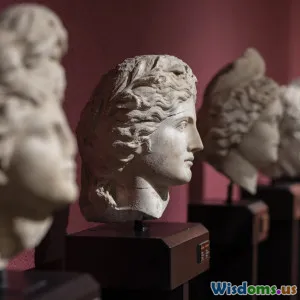
Top Five Magical Creatures Found in Slavic Folklore
35 min read Discover five iconic magical beings from Slavic folklore, their origins, powers, and regional variations, with examples from tales featuring Baba Yaga, Domovoi, Rusalka, Leshy, and Zmey. (0 Reviews)
Top Five Magical Creatures Found in Slavic Folklore
Folklore is never just entertainment; it is a map of a people’s anxieties, hopes, landscapes, and coded advice for surviving both the wilderness and one’s own community. In Slavic traditions—from the birch forests of Russia to the river valleys of Ukraine and Poland, and down to the Balkans—magical beings populate that map. They lurk in ovens and thickets, crown riverbanks with moonlit hair, and shake the rafters when the family forgets its obligations.
This article explores five of the most enduring magical figures in Slavic folklore. Each creature appears in multiple forms across regions, but consistent themes emerge: respect for boundaries, the primacy of hospitality, and the dangers of arrogance. Along the way, you will find concrete examples from folktales, comparisons between regional variants, and practical tips for researchers, creatives, and travelers who want to engage responsibly with this living heritage.
Why These Five? Understanding the Slavic Mythic Landscape

Slavic folklore comprises countless spirits and beings—household helpers and tricksters, malevolent shapeshifters, water-dwellers, and giants. Choosing a top five means favoring figures that are both widely attested and culturally influential across different Slavic-speaking regions. The creatures below intersect with central themes:
- Liminal spaces and boundary-keeping: thresholds, rivers, forest edges.
- Reciprocity: offerings, hospitality, and the consequences of neglect.
- Nature as personality: forest, water, and hearth are not neutral; they have moods and guardians.
The five we will focus on are:
- Baba Yaga (Baba Jaga in Polish): the liminal witch in the hut on chicken legs.
- Domovoi (Domowik, Domovyk): the family’s house spirit.
- Leshy (Leshii, Lesovik): lord of the forest’s pathways and illusions.
- Rusalka (plural Rusalki): the water maiden whose beauty is a warning sign.
- Zmey and kin (Zmey Gorynych, Zmaj, Smok): dragons that test heroes and villages alike.
Each entry below combines analysis, concrete examples from tales, and how-to guidance for interpretation and modern adaptation.
Baba Yaga: The Liminal Witch in the Chicken-Legged Hut

Baba Yaga is perhaps the most famous figure in East Slavic folklore: a fierce, ambiguous witch who lives deep in the forest in a hut perched on chicken legs that can rotate to face visitors—or turn away. She flies in a mortar, steering with a pestle, and sweeps away her tracks with a birch broom. In many tales, she sniffs the air and mutters that a Russian smell is near; in others, she is a gatekeeper who rewards courage and courtesy.
Concrete examples:
- Vasilisa the Beautiful: Vasilisa is sent to Baba Yaga’s hut to fetch fire. With the help of a magical doll (a maternal blessing), she accomplishes impossible tasks—sifting poppy seeds from soil, fetching water without spilling. Baba Yaga is dangerous but ultimately fair, and the glowing skull from her fence later protects Vasilisa from a cruel step-family.
- The Maiden Tsar and variants: Heroes or heroines who enter Baba Yaga’s domain often receive exacting tests. Success yields precise, practical rewards: a horse that can outrun death, a thread to find one’s way back, a fire that burns only the guilty.
Key traits and symbolism:
- Liminal authority: Baba Yaga rules thresholds—between wilderness and settlement, youth and adulthood, life and death. She polices etiquette in the liminal space. The chicken-legged hut embodies this: it turns to admit those who know the correct phrase, signaling that knowledge and respect unlock safe passage.
- Ambiguity as pedagogy: She is neither purely villain nor fairy godmother. Her ambiguity forces characters to exercise judgment, humility, and perseverance.
- Domestic technology as magic: The mortar, pestle, oven, and broom are all ordinary tools elevated to instruments of power. The lesson: mastery of daily skills is a kind of sorcery.
Actionable guidance:
- For writers and game designers: Use Baba Yaga to test characters’ etiquette. Replace combat challenges with domestic ones—bake a loaf under impossible conditions, name the winds correctly, sort seeds by dawn. Reward precision and kindness, not brute force.
- For educators: Frame Baba Yaga’s hut as a case study in liminality. Ask students to identify other threshold symbols (gates, bridges, crossroads) across world folklore and discuss why pivotal decisions often occur there.
- For researchers: Track regional name variants and motifs. In Polish tales she may be called Baba Jaga; in some Belarusian and Ukrainian traditions, multiple Yagas appear. Catalog motifs such as the skull-fence and tasks involving fire or spinning.
Practical insight:
- If you are constructing an authentic-feeling Baba Yaga scene, privilege sensory details: resinous smoke, bread crusts cooling in rush baskets, the scrape of a pestle in a wooden mortar. Have the hut creak like a living creature and pivot only when addressed with respect, for example a rhyme or honorific title recognizing the hut as an elder.
Domovoi: The House Spirit Who Keeps Score

The domovoi is the domestic backbone of Slavic folk belief: a guardian spirit that lives in the hearth, behind the stove, under the threshold, or among the rafters. Often imagined as a small, bearded elder, the domovoi protects the house and its people, but expects reciprocity. He warns with knocks or tugging hair, braids horse manes if displeased, and may mimic footsteps to alert the family to intruders.
Examples and practices:
- Offerings: Bread crusts, a spoon of kasha, or a bit of milk left overnight might keep the domovoi friendly. Some traditions recommend placing the offering near the stove or in the corner behind a household icon.
- Moving house: A common custom is to invite the domovoi to follow when a family relocates—by calling him along, or by carrying a coal from the old hearth to the new one. Failing to do so courts mischief: misplaced tools, broken crockery, uneasy dreams.
- Omen and warning: A domovoi brushing or tugging at hair at night can mean an impending warning. Conversely, a gentle, weight-like presence at the foot of the bed can be a sign of familial protection.
Regional notes:
- East Slavic regions often emphasize the stove as the domovoi’s seat, consistent with the stove’s role as the household’s heart.
- West Slavic areas may use related names (domowik in Polish). Variants sometimes overlap with other house sprites or even poltergeist-like entities.
What the domovoi teaches:
- Reciprocity and routine: He rewards a tidy house, considerate speech, and care for livestock—practical virtues mapped onto the supernatural.
- Threshold ethics: The threshold is sacred; sweeping dust out at night or slamming doors can be seen as disrespecting the spirit’s boundaries.
How-to engage respectfully today:
- Household tradition-building: Without reenacting belief, families can adopt rituals that honor the spirit of reciprocity—weekly tidy hours, a symbolic shared treat on the kitchen counter to mark gratitude for the household itself.
- Creative adaptation: Designers can treat the domovoi as an environmental AI in games—a presence that buffs the party’s rest or warns of stealth checks if the player maintains certain behaviors (clean camp, tend animals, share food).
- Research tip: When reading nineteenth-century folklore collectors such as Afanasyev, note how Christian practices (prayers, icons) blend seamlessly with domovoi etiquette. Document syncretic practices rather than forcing sharp distinctions.
Leshy: The Forest’s Master of Directions and Disguise

The leshy is the guardian spirit of the forest. Sometimes gigantic, sometimes small as a blade of grass, he is a shapeshifter with bark-like skin, green hair, a booming laugh, and a love of leading travelers astray. Whistling in the woods is often said to invoke the leshy, who answers with eerie echoes.
Tale elements:
- Path confusion: Travelers suddenly find themselves walking in circles despite careful bearing. The leshy delights in swapping north and south, or making a familiar path branch into impossible options.
- Kinship trick: In some regions, woodcutters placate the leshy by calling him uncle or grandfather, acknowledging his sovereignty in the forest.
- Tests of humility: Heroes who bow to a tree before asking directions, leave bread, or share salt may receive a guide animal or a wind that pushes them home.
Regional comparisons:
- In northern and central Russia, the leshy is a lord of big forests, with a court of lesser spirits. In some South Slavic traditions, related wood spirits may be more localized.
- The Czech and Slovak realms have figures like the vodník in watery spaces; the leshy’s closest analogs there are less standardized in popular culture, but the motif of a forest trickster remains.
Practical advice and symbolism:
- Respect for orientation: The leshy embodies the reality that the forest is not a backdrop but an agency-rich environment. Carrying a bit of bread is both folkloric and practical; food can be lifesaving if lost.
- Be wary of whistling: The common admonition not to whistle in the woods functions as a safety mechanism—sound draws attention. In pedagogy or design, use audible cues to signal proximity to the leshy’s domain.
How to adapt:
- For narrative designers: Replace random encounter tables in forest biomes with leshy encounters keyed to player behavior. If players leave offerings at shrines or aid animals, the forest shifts to assist rather than obstruct. If they litter or overharvest, paths mislead and compasses fail.
- For educators in environmental studies: Use the leshy as a cultural gateway into discussions about orientation, signage, and trail stewardship. Compare folk cautions with modern Leave No Trace principles.
Example scenario to borrow:
- A traveler promises to share salt with the first being he meets in the forest. He keeps his promise to a ragged, green-bearded stranger and receives a strip of bark that maps the canopy by constellations. The bark only works if the traveler avoids boasting. This blends folklore’s reciprocity with doable gameplay: a navigation buff that cancels when the player taunts.
Rusalka: Beauty at the Water’s Edge

The rusalka is a water spirit most often depicted as a beautiful maiden with long hair, inhabiting rivers, lakes, or marshes. Her stories vary: in some traditions she represents the restless souls of young women who died untimely—particularly by drowning—while in others she is a fertility spirit whose dances bring moisture and growth to fields.
Narrative features:
- The comb and the hair: Rusalki are often shown combing their hair on riverbanks by moonlight. The comb is a liminal tool: grooming before a symbolic crossing. In some tales, if you seize the comb or wrap her hair in a towel, you gain leverage over the rusalka—though this rarely ends well.
- The embrace: A rusalka may lure a passerby with song and beauty, then drag him into the depths. Alternatively, she may request a favor—flowers, a wreath—and repay with either grace or peril depending on the human’s behavior.
Seasonal customs:
- Rusalka Week (Rusalnaya Nedelya, sometimes early summer): In parts of Ukraine and Belarus, older records describe a week when swimming was avoided, wreaths were floated on water, and young women honored water spirits. The customs functioned as safety rules and fertility rituals wrapped in mythic narrative.
Regional distinctions:
- East Slavic narratives often lean into the liminal and tragic origins of rusalki.
- West Slavic areas have related figures: the Polish utopiec (a drowner) and the Czech vodník (water man) who collects souls in jars. These figures share the water’s ambiguous generosity and danger.
Interpreting the rusalka:
- She is less a femme fatale than an embodiment of drowned memory, communal mourning, and river-rights. Her presence signals that the water must be navigated with ceremony and caution.
Actionable adaptations:
- For writers: To avoid flattening the rusalka into a stock siren, anchor her in local waterscapes. Give her a specific river that floods in spring and recedes in late summer; let her moods follow the hydrological cycle. Tie her favors to ecological acts: clearing trash from the bank, planting willows.
- For educators: Use Rusalka Week as a prompt to discuss how traditional taboos encode practical safety—in this case, the caution against swimming during cold currents or high runoff.
- For visual artists: Depict the rusalka with botanical specificity: reeds of phragmites, water lilies, or sedges appropriate to the region. Hair can hold seeds and algae, signaling her role in the life of the water as well as its dangers.
Example vignette to adapt:
- A miller’s daughter leaves wreaths of mugwort and thyme on the sluice gate each new moon. The rusalka, in gratitude, loosens a jammed wheel during a drought. When the miller becomes greedy and widens the sluice to steal more flow, the water spirit braids his beard into the reeds, forcing a lesson in reciprocity.
Dragons Across Slavic Lands: Zmey, Zmaj, Smok

Slavic dragons are plural and diverse. The East Slavic Zmey Gorynych is a fire-breathing, often three-headed dragon defeated by heroes like Dobrynya Nikitich. In South Slavic epics, the zmaj can be a lover, patron, or rival—powerful but not always malign. West Slavic lore boasts the Smok Wawelski of Kraków, a dragon famously outwitted with a sulfur-stuffed lamb.
Key cases:
- Zmey Gorynych: In bylina songs, Dobrynya Nikitich battles a dragon after violating a taboo (bathing where forbidden). The fight lasts days; the dragon sometimes demands tribute or a maiden. Dobrynya ultimately prevails, but only after acts of humility or counsel from wise figures. The lesson: power is tempered by obedience to tradition.
- Smok Wawelski: Kraków’s dragon ravages the city until a cobbler named Skuba tricks it into eating a lamb packed with sulfur. The dragon drinks from the Vistula until it bursts. This tale champions craft and wit over brute strength.
- South Slavic zmaj: In Serbian epics, a zmaj can father heroic children or protect villages from storms. Not all dragons are enemies; some are personalities within local ecosystems of power.
What dragons symbolize:
- Concentrated power and appetite: Fire, hoarding, and taxation-like tribute. But in Slavic contexts, intelligence and cunning often trump raw force.
- Community solutions: The dragon problem is almost always communal, calling forth not just a lone hero but collective ingenuity, counsel, and ritual.
How-to use dragons effectively:
- For storytellers: Blend the three traditions. A zmaj might offer a pact to a village: protect their flocks in exchange for offerings, but becomes a tyrant when tribute becomes greed. The hero must renegotiate through wit and community backing, not just a duel.
- For educators: Contrast the sulfur-lamb solution in Kraków with Dobrynya’s drawn-out combat. Use this to discuss different cultural values: craft and civic cleverness versus individual martial endurance.
- For game design: Multi-headed dragons can be encounter phases—each head governing a domain (fire, storm, smoke). Players can research folk taboos to unlock non-combat solutions: turning the dragon’s appetite against it, invoking a storm saint, or offering trial by riddles.
Specific sites to explore:
- Kraków’s Wawel Hill features the Dragon’s Den cave and a contemporary dragon statue that periodically breathes fire—a modern monument to the Smok Wawelski legend.
- In Russian iconography and folk prints, dragons battling saints or heroes reflect a blend of Christian and pre-Christian imagery; ethnographic museums in major cities often display such prints.
How These Creatures Interlock: A Mini-Analysis of Themes

The five figures above are not isolated fancies; they form a network of ethics and landscape cues.
- Boundaries and thresholds: Baba Yaga at the forest edge, the domovoi at the threshold, the rusalka at the riverbank, and the leshy at the path’s ambiguity. Even dragons police boundaries: river crossings, city gates, mountain passes.
- Reciprocity: Offerings to the domovoi, salt with the leshy, wreaths for the rusalka, respectful speech to Baba Yaga, tribute to or negotiation with the dragon. The rule beneath: relationships require ongoing care.
- Liminal risk as education: Characters who enter liminal spaces unprepared face danger; those who bring gifts, humility, and knowledge earn safe passage or aid.
- Technology as ritual: Household tools and know-how—as humble as separating seeds—become the means of winning supernatural favor. Craft is not merely functional; it is moral.
Comparison insight:
- Slavic dragons and Baba Yaga both test the hero’s adherence to taboo and ritual. Dragons may punish arrogance; Baba Yaga punishes incivility, impatience, or ignorance.
- The domovoi and leshy are guardians on different scales. Both demand respect; both can help or hinder. In a narrative world, they can be designed as two ends of a spectrum: micro-guardian of home, macro-guardian of wilderness.
Actionable takeaway for storytellers and researchers:
- Map your narrative by liminal spaces. Instead of plotting by events alone, plot by crossings—doorstep, bridge, treeline, city walls. Assign a guardian or ritual at each crossing. Ask what the character offers, what they learn, what they leave behind.
Field Notes for Creators: How to Adapt Slavic Creatures Responsibly

Adapting folklore into modern media is thrilling, but authenticity requires care.
- Start with region and landscape: A domovoi from a northern Russian peasant stove context will differ in details from a Belarusian or Polish domestic sprite. Place creatures in specific environments—pine versus beech forests, peat bogs versus chalk streams.
- Build ritual logic: Before you invent powers, decide what offering, taboo, or etiquette governs the relationship. Make the creature consistent: the domovoi rewards cleanliness; the leshy punishes arrogance; the rusalka enforces river caution.
- Avoid flattening: Baba Yaga is not a generic villain. Give her contradictory behaviors that resolve into a moral logic: harsh tests paired with fair trades.
- Use domestic detail as magic system: Recipes, woodcraft, herbal knowledge. Examples:
- Pestle and mortar actions as spellcasting verbs: grind, sift, bind, leaven.
- Bread types signify intentions: sourdough for patience, rye for strength, honey cake for reconciliation.
- Forest skills as counter-magic: tying a birch knot to remember a fork in the path; aligning with lichens and moss for cardinal directions.
- Leverage non-combat solutions: Dragons can be bargained with; Baba Yaga trades tasks for boons; the leshy gives directions if honored. Design encounters that allow research, social checks, and ritual performance to matter as much as damage rolls.
Creative exercises:
- Write a scene where a character must apologize to the domovoi. What household tasks become ritual penance?
- Draft a side-quest in which a rusalka agrees to guide boats if locals restore riparian vegetation. What obstacles—both human and supernatural—stand in the way?
- Design a forest dungeon whose map rotates each time players boast or whistle. What behaviors stabilize the paths?
Cultural respect checklist:
- Use primary sources and reputable collections. Names to look for include Alexander Afanasyev’s compilations of Russian tales and Linda Ivanits’s scholarship on Russian folk belief. Seek Ukrainian, Polish, Serbian, and Bulgarian sources for regional balance.
- Note living traditions. In many communities, these beliefs persist in softened or symbolic form. Treat them as living culture, not exotic relics.
- Collaborate. If possible, consult cultural advisors from the regions you are depicting.
A Traveler’s Guide: Where the Myths Touch the Ground

Folklore thrives at the intersection of story and place. If you are planning a cultural itinerary, here are grounded ways to encounter these myths.
- Kraków, Poland: Visit Wawel Hill for the Dragon’s Den cave and the modern fire-breathing dragon statue by the Vistula. Nearby signage and city lore recount versions of the Smok Wawelski tale. Combine with a walk through the Old Town to trace the medieval urban context that shaped the story’s emphasis on civic cleverness.
- Ethnographic museums: Major institutions in Warsaw, Kyiv, Moscow, Saint Petersburg, and Sofia preserve artifacts tied to household life—stoves, bread ovens, spinning tools—that ground Baba Yaga and the domovoi in real material culture. Look for folk prints (lubok) featuring dragons or witch motifs.
- Open-air museums and skansens: Historical villages allow you to see stove-hearth layouts, thresholds, and barns where domovoi lore would naturally develop. Ask guides about seasonal customs around threshing, spinning nights, or summer river rites.
- Rivers and wetlands: In Ukraine and Belarus, local festivals and folk song repertoires still preserve the echo of Rusalka Week. Even where the specific rites are not performed, community guides can share stories about avoiding certain banks at night or floating wreaths during weddings.
- Forest reserves: Guided walks can highlight tree species and path patterns that match leshy tales. Pay attention to how quickly one can become disoriented under canopy—a real condition myth turned into cautionary allegory.
Travel tips with folkloric awareness:
- Ask about local names and variants. The same being may be known by different terms across short distances.
- Treat shrines, rivers, and old trees with respect. Even if a practice is not yours, courtesy goes far.
- Take notes on textures: stove tiles, bark patterns, river smells. These sensory details will anchor your later reading and writing.
Further Reading, Listening, and Viewing

A shortlist to deepen your understanding, chosen for accessibility and breadth:
- Alexander Afanasyev, Russian Fairy Tales (multiple English translations). A foundational collection featuring Baba Yaga, dragons, and house spirits.
- Linda J. Ivanits, Russian Folk Belief. Scholarly but readable overview of beliefs surrounding domovoi, rusalki, and others.
- Roman Jakobson, On Russian Fairy Tales (essays). Structural insights into recurring motifs and functions.
- Andrzej Sapkowski’s Witcher stories and their adaptations. While modern and hybridized, they incorporate Slavic-inspired entities such as leshens (a creative spin on the leshy) and water spirits, useful for studying adaptation.
- Antonín Dvořák, Rusalka (opera). A Romantic reinterpretation that shaped modern perceptions of the water maiden. Compare its lyricism with folk versions’ cautionary tone.
- Regional folklore collections from Poland, Ukraine, Belarus, Serbia, and Bulgaria. Seek bilingual editions where possible to cross-check translations and note regional nuance.
Research tip: When reading older collections, note the compiler’s context. Nineteenth-century editors often filtered oral tales through their era’s moral lenses. Compare multiple versions of the same tale to detect original motifs versus editorial additions.
Quick Reference: Do’s and Don’ts for Each Creature

-
Baba Yaga
- Do approach with respect and precise speech. Expect tasks that test domestic skill.
- Don’t assume she is evil. She is a regulator of boundaries and etiquette.
- Narrative trigger: Seek fire or counsel from her only when you have a maternal or elder blessing in your pocket, literal or figurative.
-
Domovoi
- Do keep the house in order and share small offerings.
- Don’t slam doors or sweep dirt out at night; respect thresholds.
- Narrative trigger: Moving house is a ritual; invite the domovoi along.
-
Leshy
- Do leave a token of respect and mind your words—no boasting, no whistling.
- Don’t assume compasses or maps will behave. The forest has opinions.
- Narrative trigger: If lost, reverse your clothing or shoes inside-out—older tricks to reset the path.
-
Rusalka
- Do honor the river with cleanliness and restraint; float a wreath if local custom supports it.
- Don’t swim at dangerous times or treat the water as a stage for bravado.
- Narrative trigger: Moonlit hair combing signals a choice: witness and withdraw, or offer help at your own risk.
-
Dragons (Zmey, Zmaj, Smok)
- Do research taboos and historical solutions—sulfur-lambs, riddles, saintly intercessions.
- Don’t default to brute force; outsmarting is the Slavic throughline.
- Narrative trigger: Dragons test communities. Solutions often involve craft guilds, councils, or pact renegotiation.
Bringing It All Together: Lessons for Modern Life

If these creatures seem distant, their lessons are not. In Baba Yaga’s tests we see the value of skill under pressure; in the domovoi’s care, the ethics of home maintenance and gratitude; in the leshy’s tricks, the importance of humility in complex systems; in the rusalka’s embrace, the call to respect natural forces; in the dragon’s menace, the power of collective ingenuity.
For any creator or reader, these myths offer a methodology:
- Attend to thresholds. Identify crossings in your work and life and mark them with intention.
- Cultivate reciprocity. Relationships—domestic, ecological, social—thrive on small, consistent offerings of attention and care.
- Elevate craft. Let competence be miraculous; celebrate tools and know-how as sources of agency.
- Prefer wit to force. In problem-solving, seek the sulfur-lamb solution: precise, contextual, clever.
Slavic folklore survives because it encodes practical wisdom in unforgettable images: a hut that stands on chicken legs and turns to face you when you ask properly; a river maiden whose comb is a warning; a house spirit that sulks when you leave dishes till morning; a forest lord who rearranges the paths when you swagger; a dragon felled by a cobbler’s trick. In these stories, the world has personality—and it responds to how we behave. That is not just an old belief; it is a modern ethic.
Rate the Post
User Reviews
Other posts in Mythical Creatures
Popular Posts














